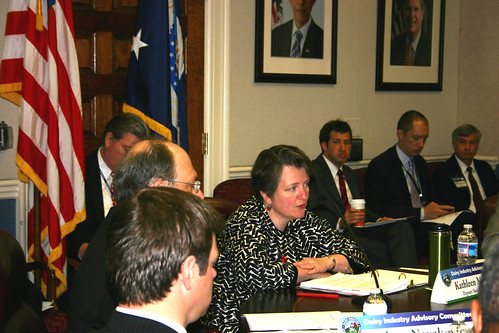Deputy Secretary Kathleen Merrigan challenged members of the Dairy Industry Advisory Committee on Wednesday to look beyond declining prices and seek an answer to the ailing dairy industry that will have a lasting impact.
“I’m asking that you start thinking in long-term solutions,” said Merrigan during a welcome address on day two of the advisory committee meeting. “I’m challenging you to not only be good advisers but good historians.”
Dairy farmers have been suffering from a decrease in milk prices for nearly two years. Since January 2009, prices have dropped by nearly half of what they were in 2008. Price declines coupled with an increase in feed prices have caused many operations to close or take on a large amount of debt.
Yet, this down cycle is nothing new to the industry.
“The boom-and-bust cycle of farm-level milk prices has repeated itself over the past three decades,” said Merrigan. She referenced a book, “Thinking in Time” that discusses the importance of history and how to use it to one’s advantage in the policy world.
“As you work to meet the industry’s needs, keep in mind that the dairy industry is often taught to be an immediate problem, not always a reflection of the bigger picture or an attempt to make decisions based on the lessons of history,” said Merrigan. “As you go about your reviews and recommendations I ask that you look ahead by looking back.”
The three-day public meeting — held at USDA headquarters in Washington, D.C. — will give the 17-member Dairy Industry Advisory Committee a chance to review farm milk price volatility and dairy farmer profitability, and make recommendations on how USDA can best address the needs of the dairy industry.
“With this appointment you have a great opportunity not just to know dairy history, but to understand its story, to use it, discuss it, analyze it,” said Merrigan. “Drawing on the lessons of the timeline you can help shape the future of dairy policies and programs that may in the end be a part of your legacy.”

Deputy Secretary Kathleen Merrigan told members of the Dairy Industry Advisory Committee that looking at the industry’s history will help develop long-lasting solutions.
